Top 11 Mind-blowing Facts about Jupiter
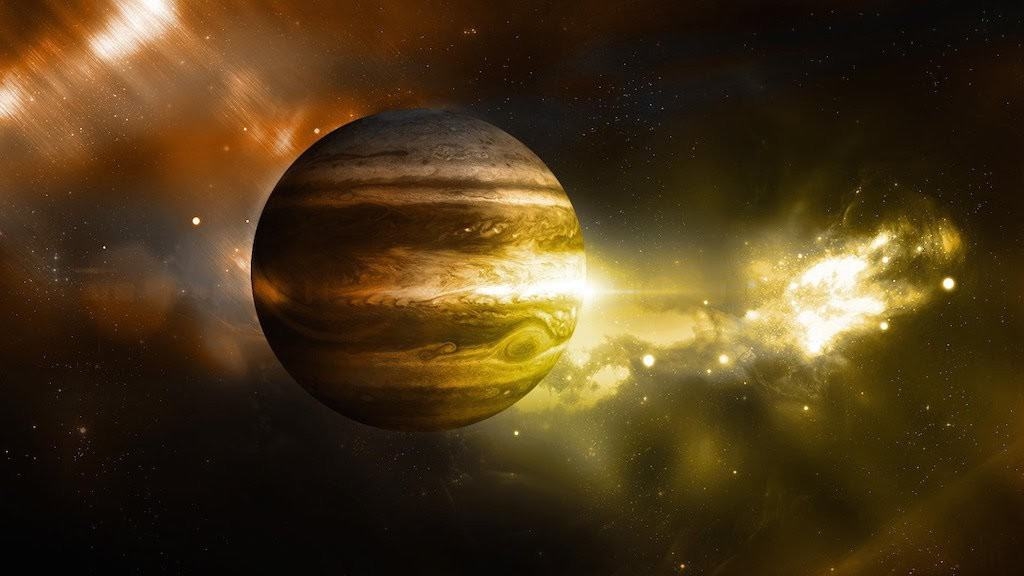 |
| 11 interesting facts about Jupiter. Photo: Historic Mysteries |
Jupiter is named after the Roman king of the gods for good reason. It’s the largest planet in the solar system and has more moons than any other planet. But that’s not all. Read on for more facts about one of the most amazing planets in the solar system.
1. Jupiter has the shortest day of all planets, despite its hefty size
For all its monstrous size and mass, you’d think Jupiter would be slow to rotate around its axis. However, it’s the fastest spinning planet in the solar system, with a rotational velocity of 45,300 km/h.
As such, a day on Jupiter only lasts 9 hours and 55 minutes. A year, however, is much longer — Jupiter orbits the sun every 11.8 Earth years.
What’s more, due to this rapid rotation, the planet has an oblate shape with flattened poles and a bulging equator. Its powerful rotation is also responsible for the next point.
2. Jupiter has the strongest magnetic field of any planet in the solar system
Like Earth, Jupiter’s core is made of active, swirling molten material whose motion generates a magnetic field — and a very powerful one to boot. According to measurements performed by NASA, Jupiter’s magnetic field is at least 14 times stronger than Earth’s, making it the most powerful in the solar system.
3. Jupiter cannot become a star
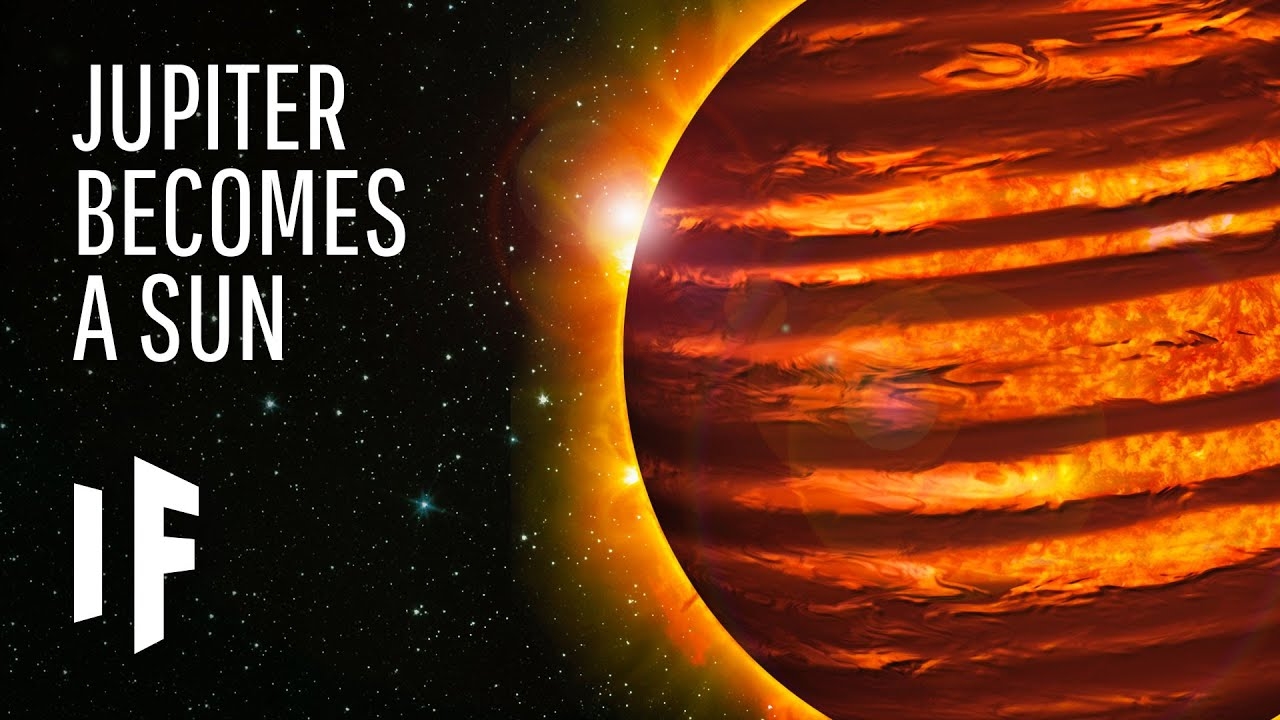 |
| Photo: INSH.world |
Astronomers call Jupiter a failed star, but that’s not really an appropriate description. While it is true that, like a star, Jupiter is rich in hydrogen and helium, Jupiter does not have nearly enough mass to trigger a fusion reaction in its core. This is how stars generate energy, by fusing hydrogen atoms together under extreme heat and pressure to create helium, releasing light and heat in the process.
This is made possible by their enormous gravity. For Jupiter to ignite a nuclear fusion process and become a star, it would need more than 70 times its current mass. If you could crash dozens of Jupiters together, you might have a chance to make a new star. But in the meantime, Jupiter shall remain a large gas giant with no hopes of becoming a star. Sorry, Jupiter!
4. Jupiter is the fastest spinning planet in the solar system
For all its size and mass, Jupiter sure moves quickly. In fact, with a rotational velocity of 12.6 km/s (~7.45 m/s) or 45,300 km/h (28,148 mph), the planet only takes about 10 hours to complete a full rotation on its axis. And because it’s spinning so rapidly, the planet has flattened out at the poles a little and is bulging at its equator.
In fact, points on Jupiter’s equator are more than 4,600 km further from the center than the poles. Or to put it another way, the planet’s polar radius measures 66,854 ± 10 km (or 10.517 that of Earth’s), while its diameter at the equator is 71,492 ± 4 km (or 11.209 that of Earth’s). This rapid rotation also helps generate Jupiter’s powerful magnetic fields, and contribute to the dangerous radiation surrounding it.
5. The clouds on Jupiter are only 50 km thick
That’s right, all those beautiful whirling clouds and storms you see on Jupiter are only about 50 km thick. They’re made of ammonia crystals broken up into two different cloud decks. The darker material is thought to be compounds brought up from deeper inside Jupiter, and then change color when they reacted with sunlight. But below those clouds, it’s just hydrogen and helium, all the way down.
6. The first astronomers to track Jupiter were Babylonians
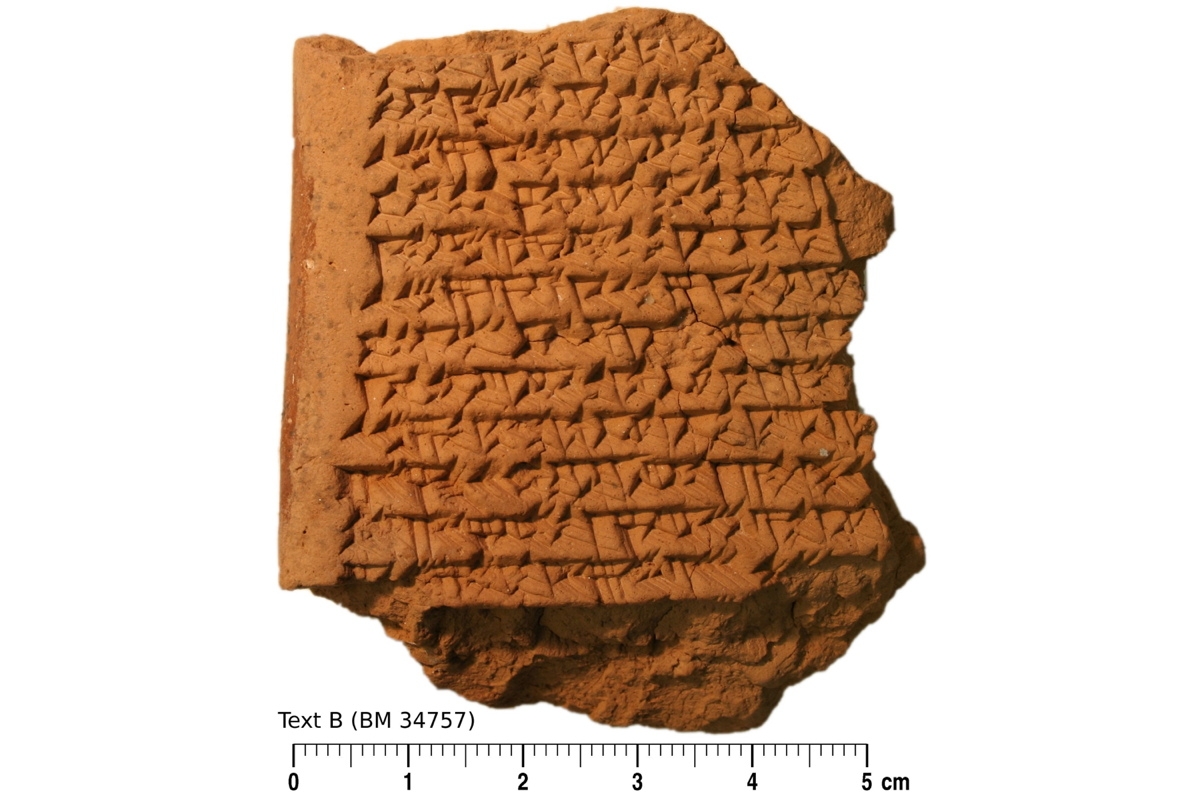 |
| Photo: Space.com |
It’s no secret that the ancient Babylonians were skilled mathematicians. For instance, they understood the Pythagorean theorem nearly 4,000 years ago, or more than a millennium before Pythagoras himself was born.
Their mathematical prowess naturally extended to astronomy, regularly employing arithmetic to catalog the movements of celestial bodies and improve their astronomical predictions.
Mathieu Ossendrijver of Germany’s Humboldt University of Berlin spent no less than 13 years studying 2,400-year-old tablets that contained what he described as a “small bunch of four weird trapezoid computations.” He later found that the trapezoids encoded aspects of Jupiter’s motion, including its appearances on the horizon.
7. Jupiter has 79 moons and counting
Until recently, Jupiter was widely regarded as the planet of the solar system with the most natural satellites. That’s until 2019, when astronomers affiliated with the Carnegie Institution for Science in Washington DC raised the total number of moons around Saturn to 82, beating Jupiter’s 79.
Almost all of Jupiter’s moons are tiny, with a diameter of less than 10 kilometers. This is also one of the reasons why astronomers are constantly finding new moons around both Jupiter and Saturn.
Jupiter does have some moons that stand out more. These four major moons are collectively known as Galilean Moons. They are Io, Europa, Ganymede, and Callisto. Ganymede, with a diameter of 5,262 km, is actually the largest moon in the solar system. And, who knows, perhaps Jupiter might regain its title as the most moon-populated planet as scientists believe it may have as many as 200 natural satellites orbiting it.
8. And some of these moons may actually be capable of harboring life
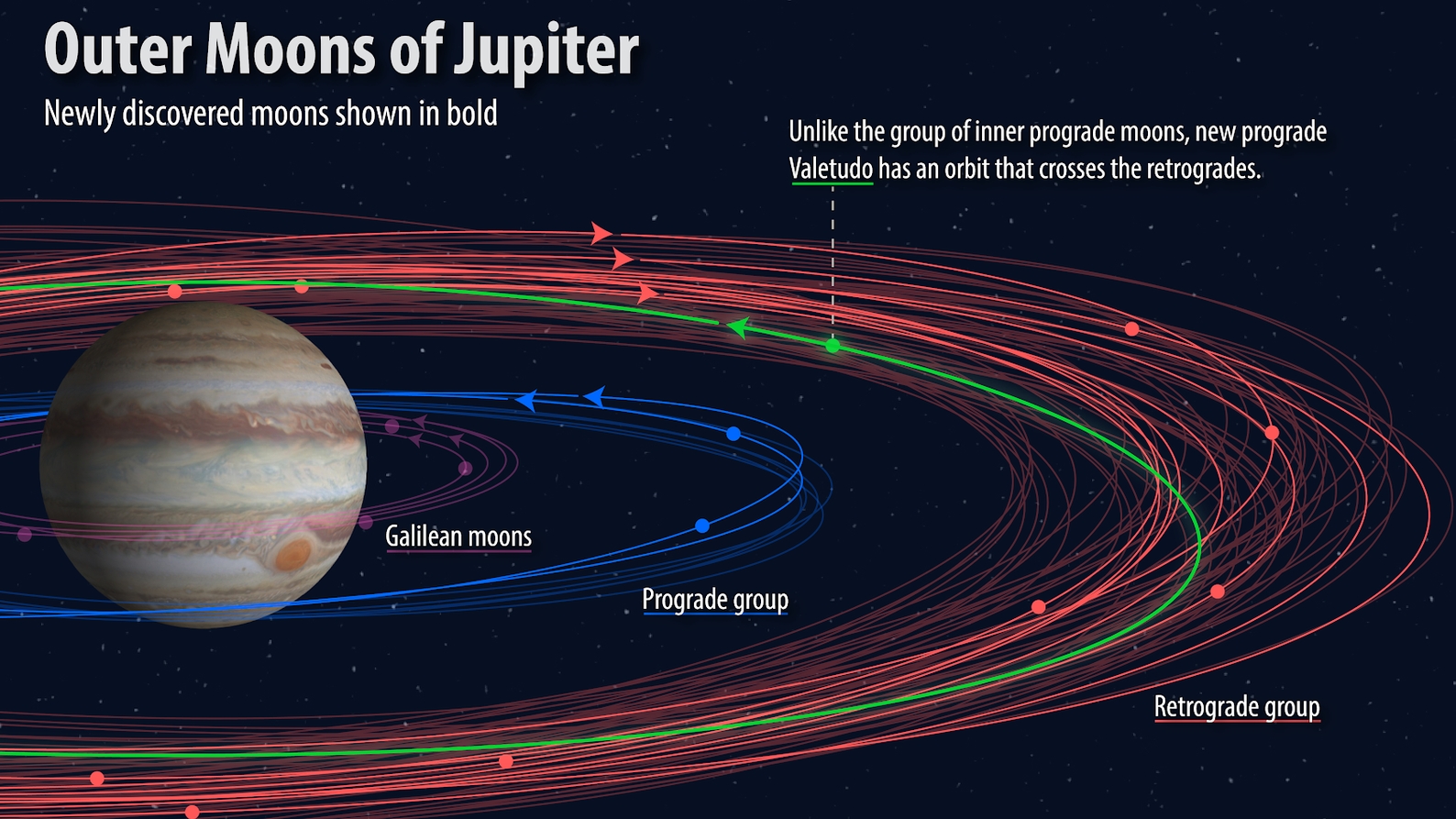 |
| Photo: NPR |
The Voyager and Galileo missions that sent spacecraft to Jupiter and its moons found that Europa, one of the biggest moons in the solar system, has a subsurface liquid ocean covered in thick ice. Now, scientists believe that Europa may actually be capable of harboring life since it meets three essential conditions: biochemically useful molecules, a source of energy, and a liquid solvent (water) in which dissolved substances can chemically react with each other.
But to ultimately find life on Europa, we have to get beneath the ice by one day putting a lander on the surface, potentially carrying a submarine.
9. Jupiter has a thin ring system
This wouldn’t be a list of facts about Jupiter without mentioning its rings. Unlike Saturn’s more iconic rings, Jupiter’s are very faint and made of dust rather than ice.
For centuries, these rings were too faint for astronomers to notice. Imagine everyone’s surprise when NASA’s Voyager 1 spacecraft beamed back images of Jupiter’s rings in 1979. The three-ring system begins some 92,000 kilometers above Jupiter’s cloud tops and stretches out to more than 225,000 km from the planet. They are between 2,000 to 12,500 kilometers thick.
10. Its Great Red Spot is actually a planetary-sized storm that has been raging on for centuries
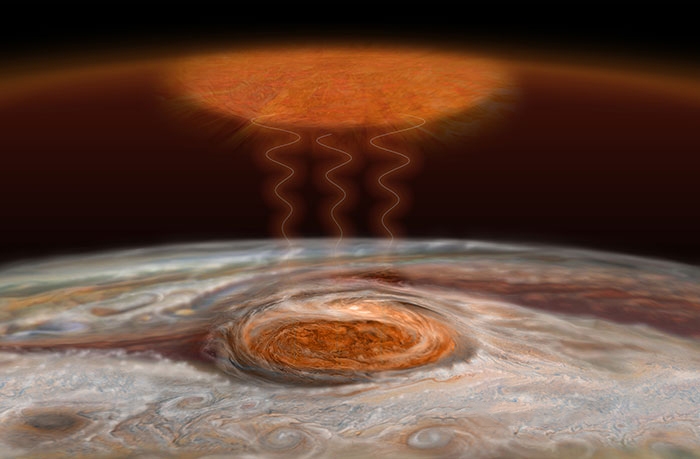 |
| Great Red Spot powers up the heat on Jupiter. Photo: Physics World |
In 1665, famed Italian astronomer Giovanni Cassini observed a huge blemish south of Jupiter’s equator. This ‘Great Red Spot’, as it’s still called today, has been the subject of contention among astronomers for centuries. Some have proposed that the feature, which is large enough to contain 2-3 planets the size of Earth’s diameter, is a huge storm. This is indeed the case, NASA scientists found after the Voyager 1 mission completed a flyby of the planet in 1979.
11. Jupiter has been visited 7 times by spacecraft
Jupiter was first visited by NASA’s Pioneer 10 spacecraft in December 1973, and then Pioneer 11 in December 1974. Then came the Voyager 1 and 2 flybys, both of which happened in 1979. This was followed by a long break until Ulysses arrived in February 1992, followed by the Galileo space probe in 1995. Then Cassini made a flyby in 2000, on its way to Saturn. And finally, NASA’s New Horizons spacecraft made its flyby in 2007. This was the last mission to fly past Jupiter, but it surely won’t be the last.
| You Can See Jupiter With Your Own Eyes: Jupiter is the third brightest object in the Solar System, after Venus and the Moon. Chances are, you saw Jupiter in the sky, and had no idea that’s what you were seeing. And here at Universe Today, we are in the habit of letting readers know when the best opportunities for spotting Jupiter in the night sky are. Chances are, if you see a really bright star high in the sky, then you’re looking at Jupiter. Get your hands on a pair of binoculars, and if you know someone with a telescope, that’s even better. Using even modest magnification, you might even spot small specks of light orbiting it, which are its Galilean Moons. Just think, you’ll be seeing precisely what Galileo did when he gazed at the planet in 1610. |
For more interesting topics, please check out our KnowInsider!
 Top 11 Coolest Jobs in the World You Should Know Top 11 Coolest Jobs in the World You Should Know Fancy being paid to live on a private island? Or for sleeping? No this is not a dream! There are actually such cool jobs in ... |
 Top 11 Countries With The Tallest People Top 11 Countries With The Tallest People Wondering about top countries with the tallest people in the world? Scroll down to see the 11 countries which (literally) came out on top. |
 Top 11 Fun Facts About the History of Halloween Top 11 Fun Facts About the History of Halloween Halloween season is in the air and there are so many things to prepare for this special festival from brainstorming dark, spooky costumes to trying ... |


























